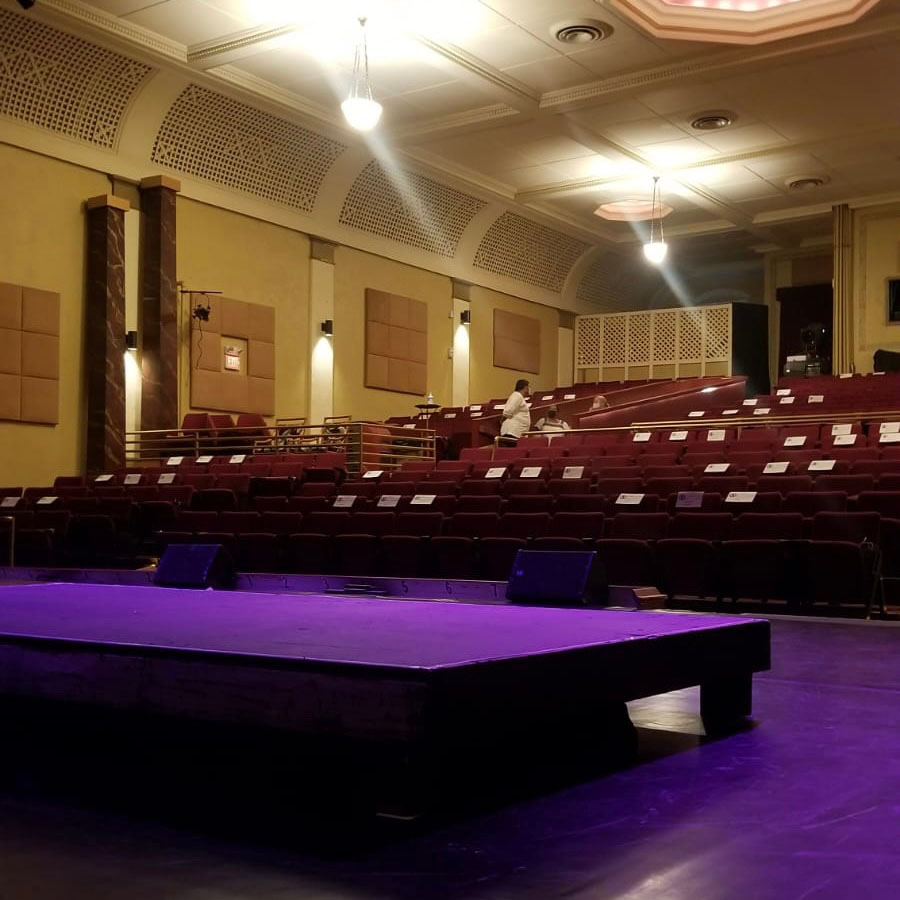
Stage Direction For Newbies
Ah, the theater. The glamorous costumes. The bright lights. The applause….
Also, the many nights of rehearsals. The broken high heel right before the curtain goes up. The wrong track playing at the top of your number! There are so many elements that go into a live performance! If you are new to the world of stage performing, it can all seem a little overwhelming. Especially for burlesque performances!
Oftentimes, we are only in a venue for the night of our gig or performance and then it’s over in a flash. If you are lucky, you might get a few minutes to run through your number with the technical crew to make sure that they have everything set for your act.
The tech crew are the amazing people whose job it is to make sure that you can be seen and/or heard and that things go down the way that they are supposed to. We both love and need these people and try to do our best to communicate our needs as clearly as possible, so that they can do their jobs effectively.
How do you help them help you? It helps to know a few things and learn the lingo! Below is an explanation for some basic common theatrical terms for stage directions.
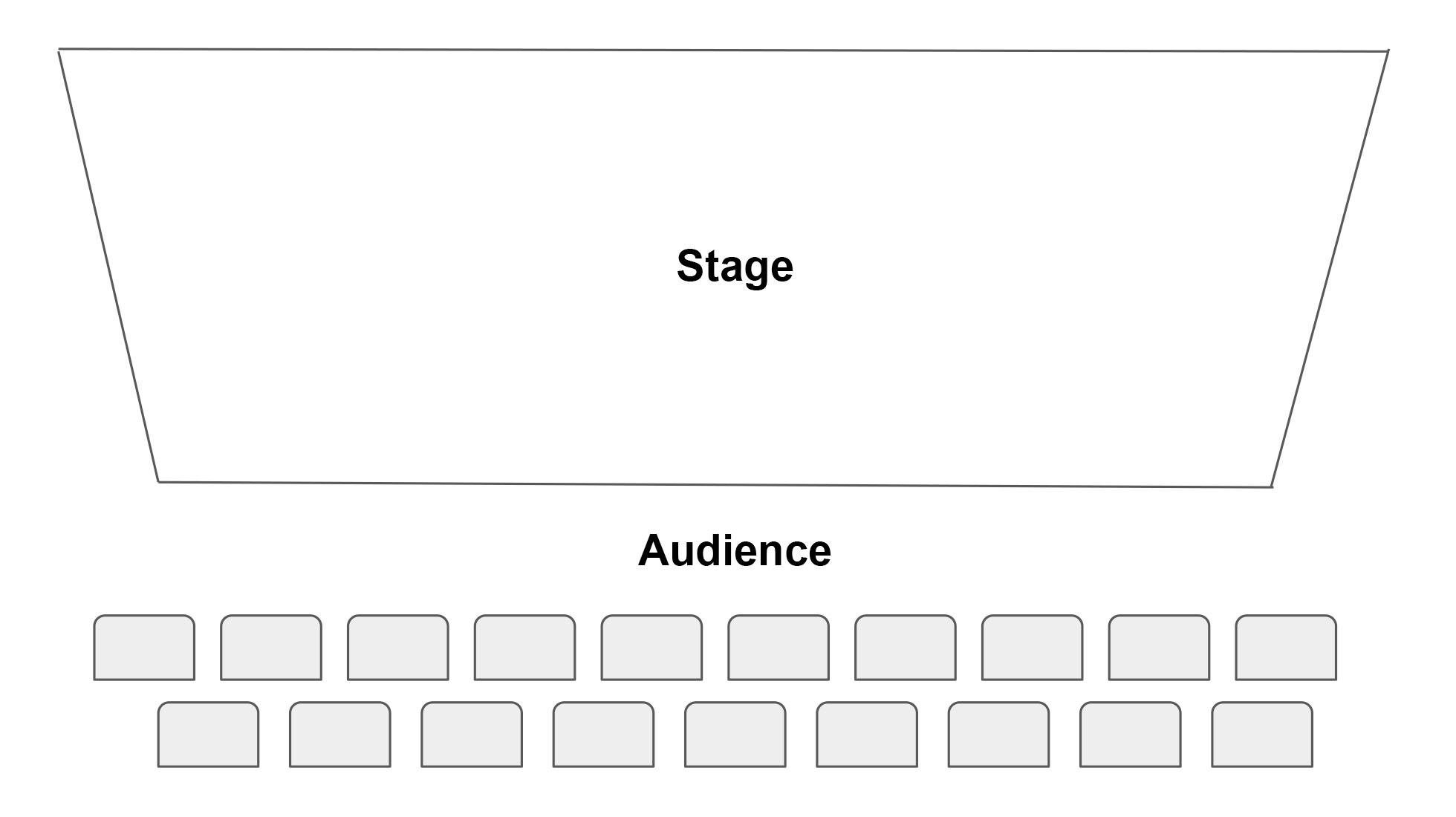
The stage! The stage is the area where the performance will take place. In a traditional theater, this is an open area (often elevated) located in front of the audience.
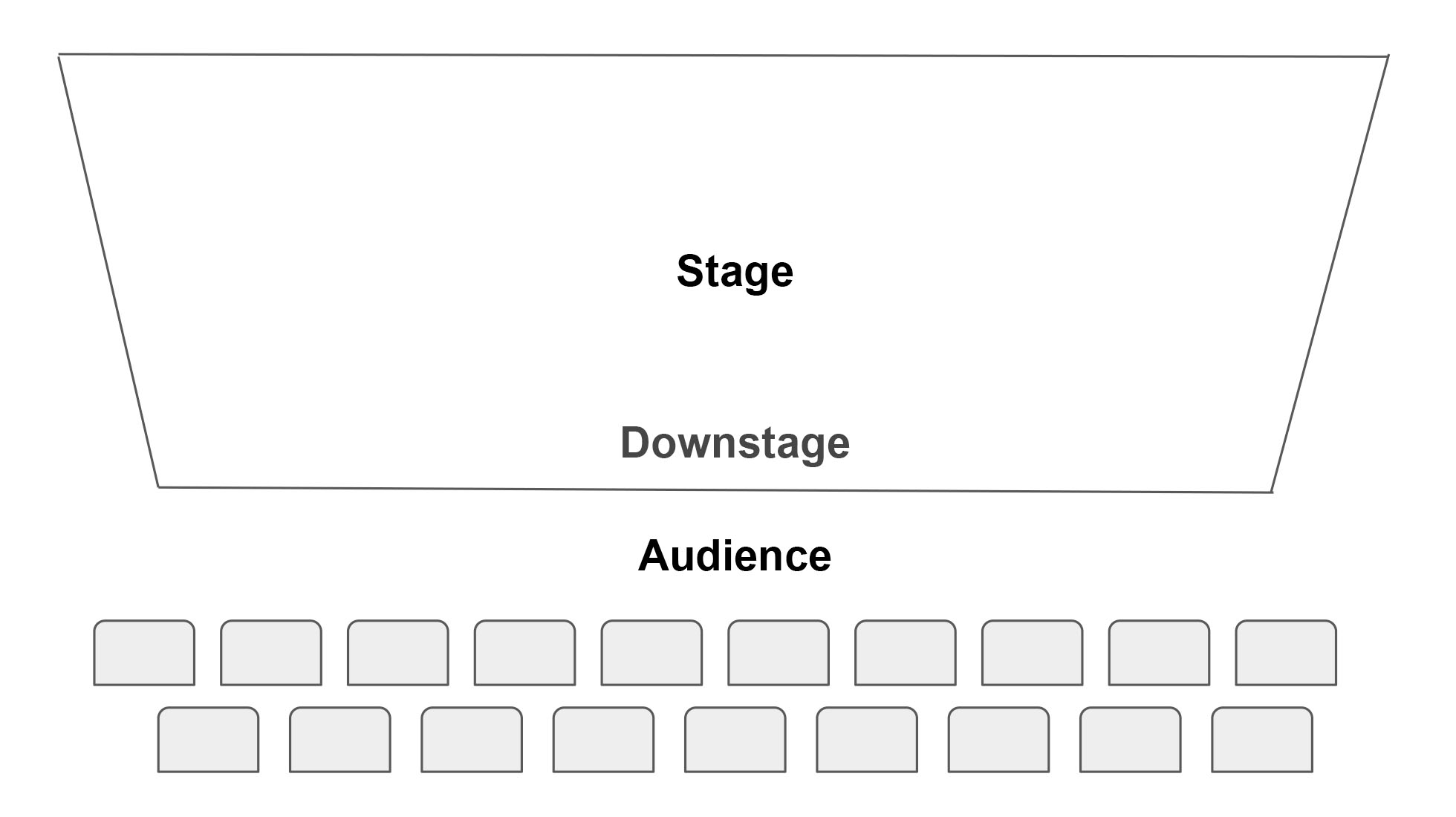
Downstage is the part of the performance area that is located the closest to the audience. This originated from the fact that, historically, stages used to be built at an angle with the area furthest from the audience being the highest and the area closest being the lowest, so that the performers were easier to see.
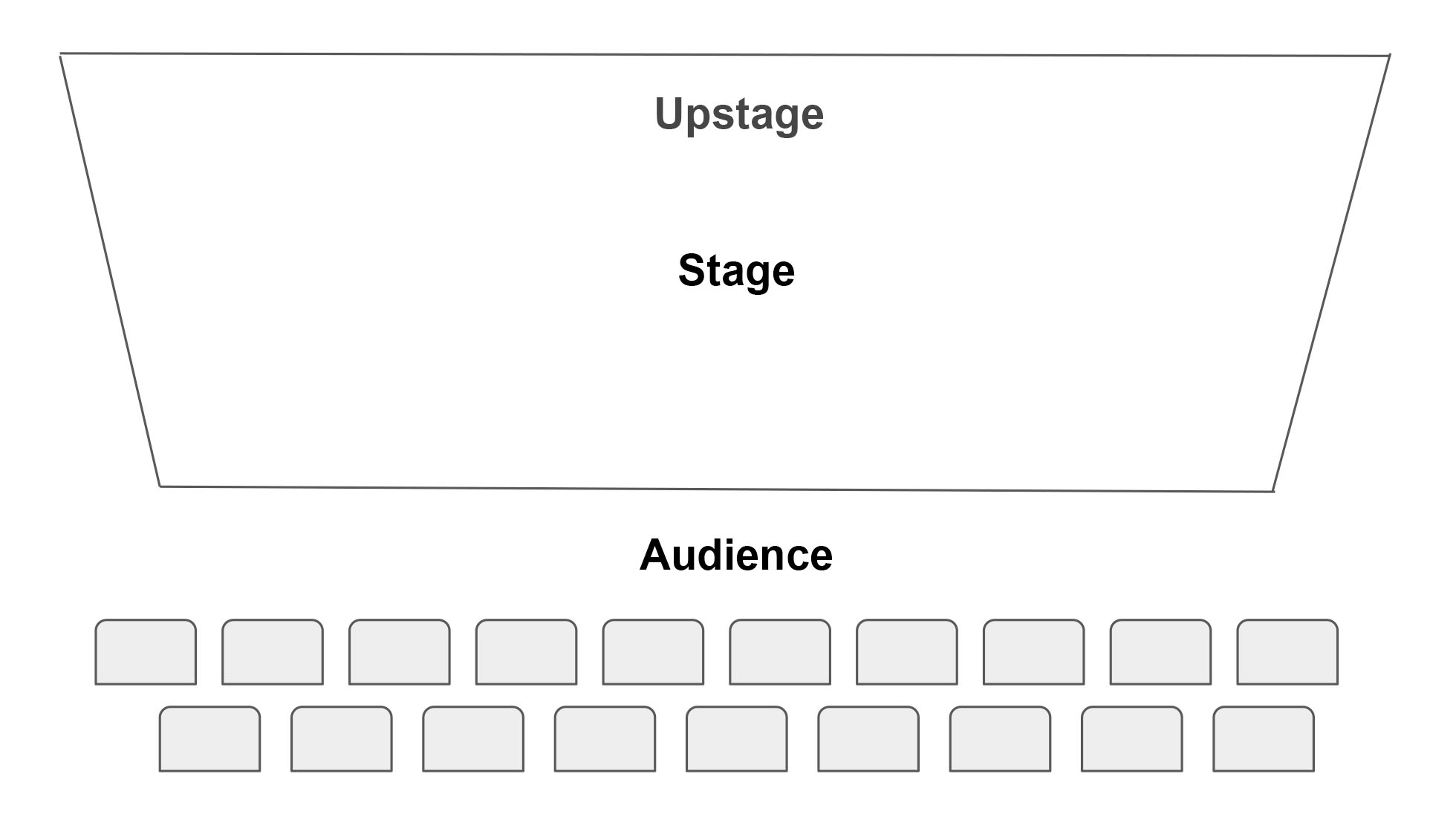
Upstage is the performance area that is located furthest from the audience.
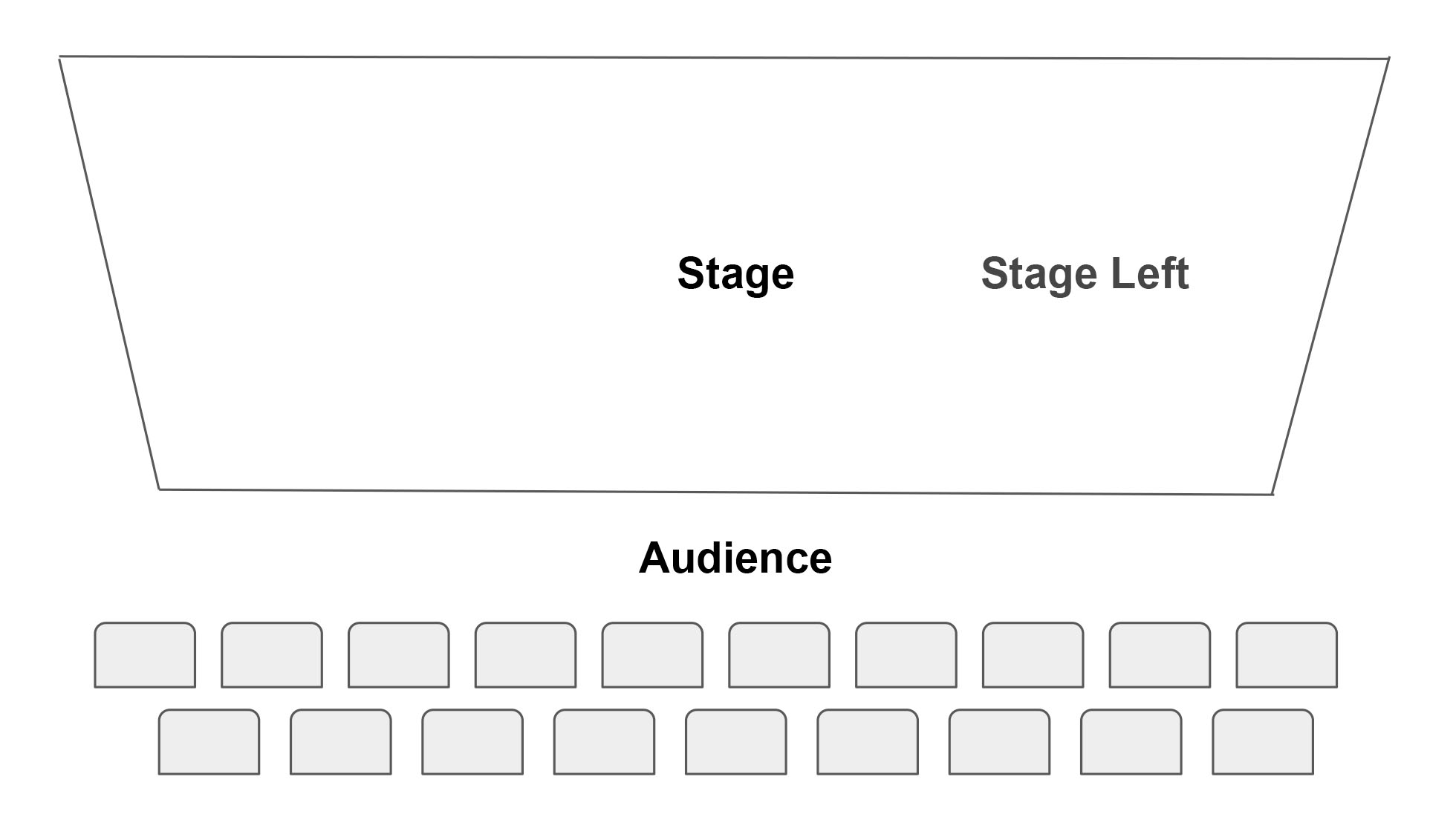
Stage left is the right side of the stage from the audience perspective, but left from the perspective of a performer who is on the stage and facing the audience.
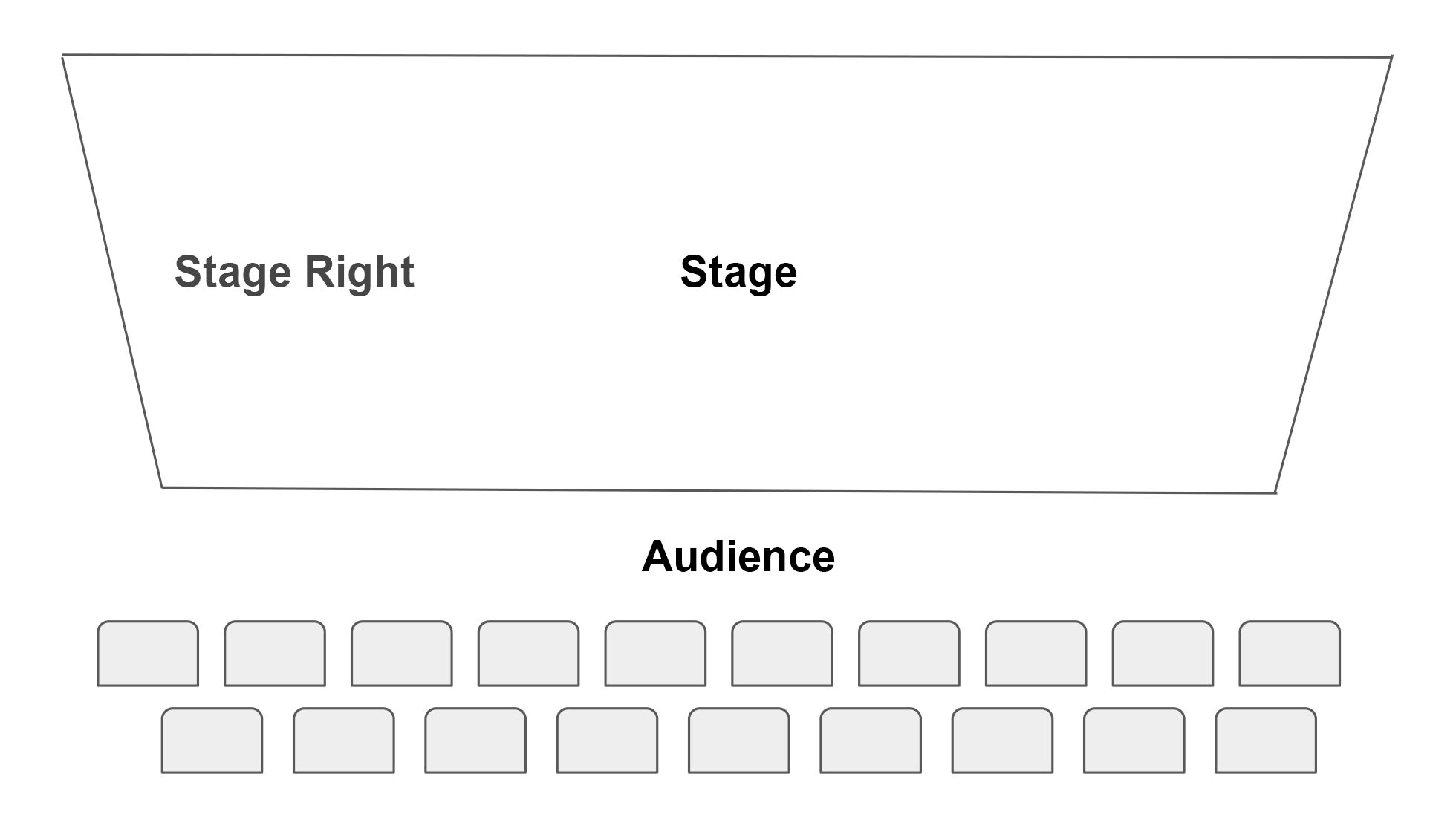
Stage right is the left side of the stage from the audience perspective, but right from the perspective of a performer who is on the stage and facing the audience.
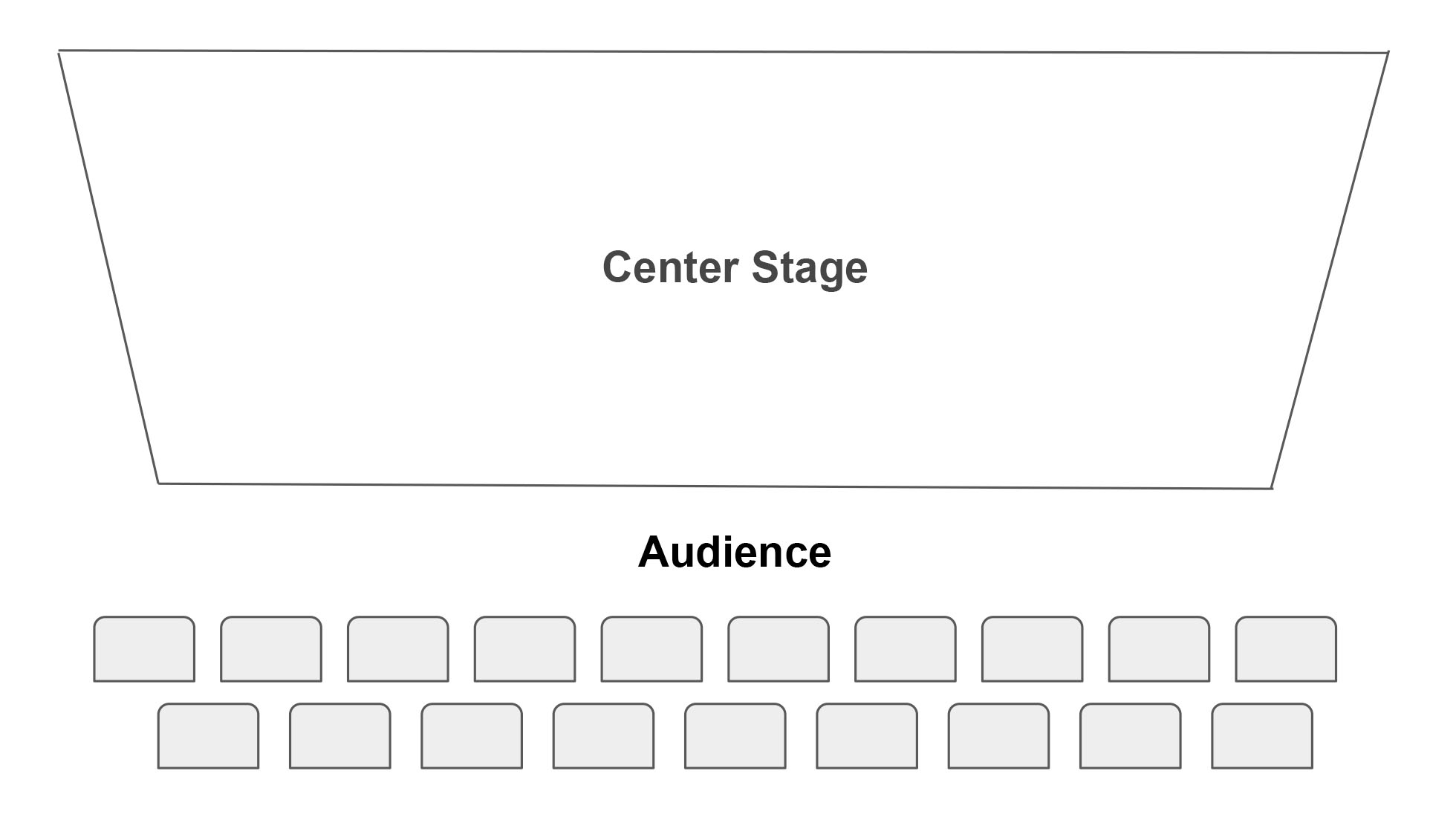
Center stage is (you guessed it) the center of the stage. Equal distances from stage right and left and upstage and downstage.
There you have it! Armed with this information, you would be good to go if the lighting technician asked you to move further downstage right (closer to the audience and to your right), or if the stage hand asked you to toss your gloves further upstage! You could even ask for your microphone to be placed center stage before you enter with your music.
Now you have a little basic theater know-how! Get out there, chip an eyelash, break a leg, and maybe a few hearts, too!
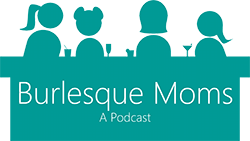

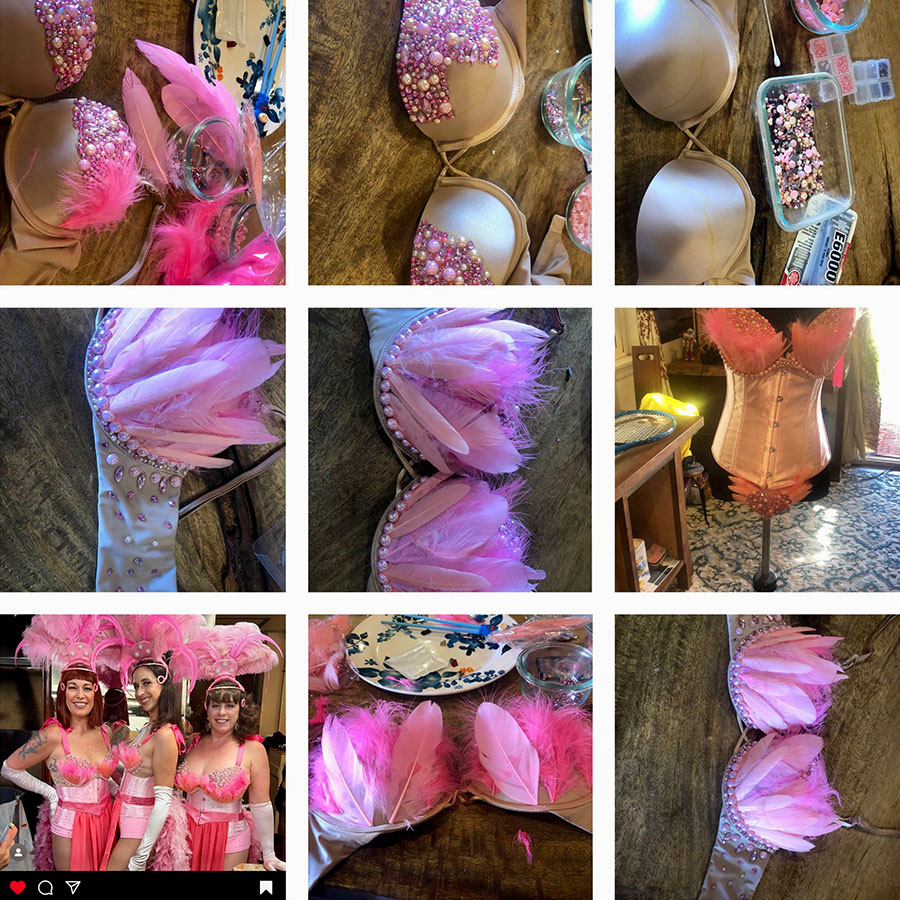
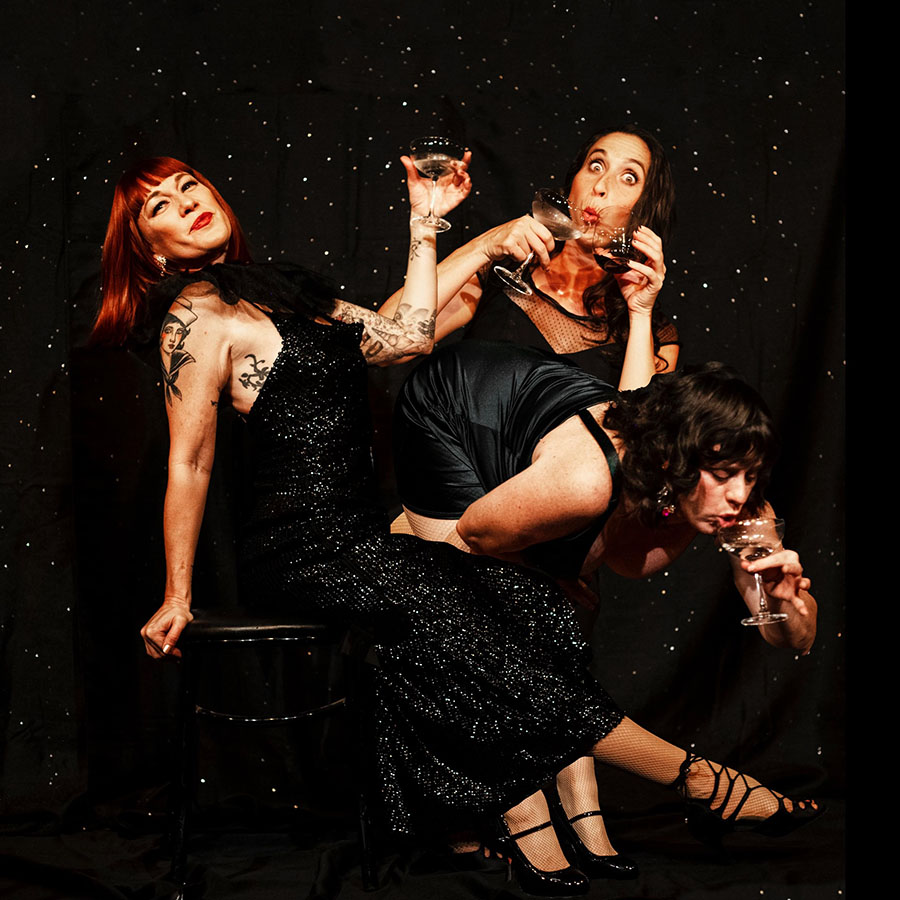
This Post Has 0 Comments